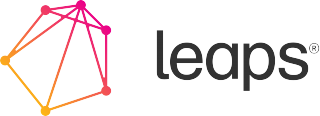In professional situations marked by short project deadlines, competing priorities, and group politics, finding a creative voice can be difficult.
At the same time, genuinely creative ideas and innovative solutions are necessary to working effectively. By combining established research on innovation with our own experience working with Fortune 500 companies, we have developed a variety of techniques to help LEAPS program participants generate the creative ideas and solutions necessary to unlock exponential value. Through these techniques, we create situations to amplify all voices on an equal stage, harness individuals’ expertise, establish trusting spaces, maximize outputs, and most efficiently use time and resources.
Whether you’re looking for a new technique to try, or have hit a specific creative block, we are confident our approaches will give you a renewed sense of creativity.
We will be sharing insights into some of our new techniques over the coming weeks. As a starting point we would like to introduce ‘Double 4s™’.
This technique is grounded in divergent thinking principles, which encourage spontaneous, non-linear creation. Double 4s™ is particularly useful when first tackling a specific and well defined challenge and does a great job of unlocking creativity. One of the main components in this process is where a Double 4s™ facilitator creates a purposeful distraction in the middle of the ideation process, giving participants’ brains an opportunity to subconsciously work on the given challenge. The simple process is easy to follow; here is how to get started.
Double 4s™: Unlocking the best of your brilliant mind
To use this technique, you will need blank sheets of paper, a bunch of Sharpies (other pens will work, but we like big marks, for bold and simple ideas) and, of course, a group of participants with a shared challenge or opportunity.
- The facilitator will have everyone in the group fold a sheet of paper in half twice – creating four sections. Once they’re ready, participants are given four minutes to come up with four different ideas addressing the challenge at hand. The time pressure and working in silence, alone is a key driver.
Having the four blank panels on their paper gives participants a concrete visual of what they need to fill with concepts and ideas.
- At the end of the four minutes, participants set aside their paper. The facilitator asks everyone to stand and requests a volunteer to answer questions unrelated to the creative challenge. As the volunteer answers, other group members listen attentively, and are then asked to summarize what they remember about the volunteer’s answers. Questions like “What was the last film/book you enjoyed?” or “Describe your pet’s personality” are useful. The facilitator will repeat this 2-4 times, depending on the size of the group.
This intentional break disengages the conscious part of the participants’ brains from trying to solve the challenge, allowing their subconscious mind to unlock deeper insights. At the same time, sharing personal anecdotes increases group cohesion and trust.
- Next, participants are asked to turn over their original sheets, or take another sheet of paper if they prefer, and fold it once again into fours. They then repeat the initial task with another four minutes to come up with four ideas related to the challenge at hand.
Participants often return to the challenge with renewed energy after taking a cognitive break. The second set of four ideas is often more diverse, more creative, and arise more easily.
- Sharing ideas after completing this initial ideation phase can happen any number of ways. One we have developed for extensive use throughout LEAPS activities is a technique we love called 3-5-10™. Keep an eye out for a guide to that technique in the coming weeks. Individual work, then shared to enhance and evolve ideas even further will unlock deeper insights. This also often creates new ideas after the sharing process.
Generating high-quality ideas in a short time frame can be quite difficult to do well.
Often, loud personalities steer solutions and overpower diversity. The Double 4s™ technique – especially when combined with others (3-5-10™) we have developed – harnesses the way our brains work best to remedy common pitfalls of idea generation.
These kinds of rapid approaches to ideation, solution mapping and getting the best out of small groups have been developed and evolved specifically by the team at LEAPS. These processes are the result of thousands of hours of group observation and facilitating workshops with creative and ‘non-creative’ teams to create game-changing innovations.
We would love for you to experience the guided journey that is LEAPS. You can get started with just one day, our Discovery Program.
To see how we can help you and your team go big, please do get in touch.

